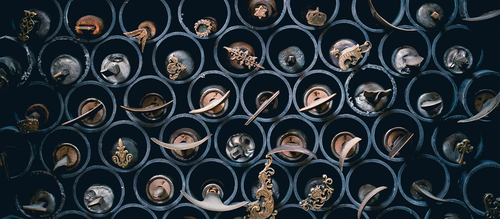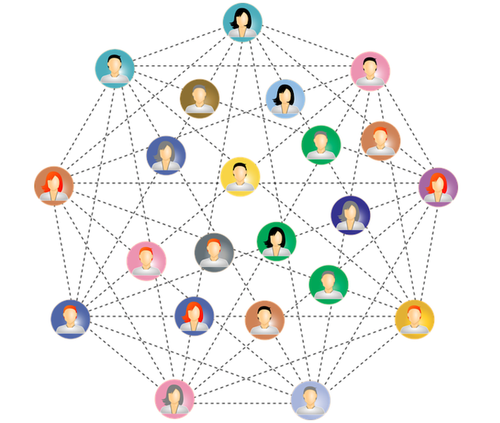
Two main accounts of the effect of social proximity between candidates competing for recognition and members of the evaluating audience can be extrapolated from extant literature on peer-based tournament rituals and cultural fields. Following a Bourdieusian tradition, one account—which we label “self-reproduction”—points to the catalyzing effect of social proximity in shaping recognition along relational lines. Drawing from recent scholarship on social evaluation, a second account—which we call “intellectual distance”—suggests that social proximity deters recognition. We probe the influence of different articulations of social proximity (i.e., direct ties, cliquishness, and reciprocity) on recognition by studying awarding decisions within the context of the Norwegian advertising industry. Interviews with key informants as well as econometric results suggest that, while self-reproduction tends to prevail over intellectual distance, these effects coexist and their relative influence varies across levels of recognition. We gauge the relative saliency of the two accounts by using a mixed methods approach. Important implications for research on social evaluation and recognition in peer-based tournament rituals are drawn.
Aadland, E., Cattani, G., & Ferriani, S. (2019). Friends, Cliques and Gifts: Social Proximity and Recognition in Peer-Based Tournament Rituals. Academy of Management Journal, 62 (3), 883-917. Link

Purpose – This paper aims to investigate whether and how the inclusion of the year of establishment (YOE) in the brand logotype affects consumers’ perceptions of brand heritage and attitudes toward the brand. Design/methodology/approach – Two studies are conducted, one on 12 service brands (universities) and the other on 12 product brands (beers), with 250 and 200 respondents, respectively, testing a model of moderated mediation to estimate the effect of YOE on brand attitude through brand heritage as moderated by brand familiarity. Findings – Reporting YOE on the brand logo invokes heritage that in turn increases attitudes. Older YOEs are more effective than recent YOEs. YOE effects are stronger for less-known brands. The findings support full mediation of heritage and moderation of familiarity. Research limitations/implications – YOE invokes heritage, especially when YOE is old and the brand, less known. Additional research should examine the YOE effect among product categories where old means “outdated,” as in the hi-tech industry. Practical implications – Managers have been using YOE since long: the findings provide guidelines for leveraging heritage. YOE works but must be signaled in the logotype to be effective and is particularly helpful for less-known brands. Thus, YOE effect gives less-known brands an additional counterbalance to the market power of their known competitors. Originality/value – Previous research showed that companies can exploit their past heritage in the present times. Nonetheless, previous studies highlighted the complexity and paucity of tools to induce heritage. This is the first study to address the YOE effect. Empirical evidence also answers recent calls for easily implementable ways to induce heritage
Pizzi, G. and Scarpi, D. (2019). The year of establishment effect on brand heritage and attitudes, Journal of Consumer Marketing, 36, 1-9. Link

The proposition that outsiders often are crucial carriers of novelty into an established institutional field has received wide empirical support. But an equally compelling proposition points to the following puzzle: the very same conditions that enhance outsiders’ ability to make novel contributions also hinder their ability to carry them out. We seek to address this puzzle by examining the contextual circumstances that affect the legitimation of novelty originating from a noncertified outsider that challenged the status quo in an established institutional field. Our research case material is John Harrison’s introduction of a new mechanical method for measuring longitude at sea—the marine chronometer—which challenged the dominant astronomical approach. We find that whether an outsider’s new offer gains or is denied legitimacy is influenced by (1) the outsider’s agency to further a new offer, (2) the existence of multiple audiences with different dispositions toward this offer, and (3) the occurrence of an exogenous jolt that helps create a more receptive social space. We organize these insights into a multilevel conceptual framework that builds on previous work but attributes a more decisive role to the interplay between endogenous and exogenous variables in shaping a field’s shifting receptiveness to novelty. The framework exposes the interdependencies between the micro-, meso-, and macro-level processes that jointly affect an outsider’s efforts to introduce novelty into an existing field.
Cattani, G., Ferriani, S., & Lanza, A. (2017). Deconstructing the outsider puzzle: The legitimation journey of novelty. Organization Science, 28(6), 965-992. Link

We integrate a rhetorical with an audience-mediated perspective on novelty recognition to advance a conceptual framework where novelty recognition is understood as the result of the interplay between an innovator’s acts of framing and audiences’ structural characteristics. Building on storytelling and narrative research, we argue that innovators can overcome the liability of newness of their ideas by using acts of framing that will persuade relevant audiences (e.g., peers, critics, investors or users) to recognize them. We also suggest thatnon-agentic mechanisms can rendera fieldmore or less permeable tothe reception of novel ideas.Specifically,we propose that two audience levelcharacteristicsaffectfield permeability to novel ideas:audienceevaluative heterogeneityandwhetheran audience isinternalorexternalto producers’ professional community. Studying innovators’ acts of framing and marrying them with audience level characteristics affords a window into a more nuanced understanding of how novel ideas are recognized and eventually accepted, thus offering several contributions to research on innovation and entrepreneurship and, more generally, social evaluation.
Cattani, G., Falchetti, D. and Ferriani, S. (Forthcoming, 2020). “Innovators’ Acts of Framing and Audiences’ Structural Characteristics in Novelty Recognition”. In Strandgaard Pedersen J., Slavich B., Khaire M. (eds) Technology and Creativity. Palgrave Macmillan, Cham. Link

In this essay, we present and illustrate a few applications of social sequence analysis (SSA) to the study of creativity. Focusing on complete sequences of events rather than on localized situations, SSA enables the analytical treatment of creativity as a process that unfolds over time, offering a fuller representation of temporal dynamics of creativity than is typically possible with other methods such as event history analysis, repeated measures, or panel design methods. We suggest that SSA holds great promise for research on creative industries, as it is particularly well suited to detect similarities among diverse creative trajectories while at the same time preserving their singularities. To substantiate our suggestions we employ data from the underground electronic music to examine trajectories of stylistic variation and illustrate how to implement sequence methods to augment and/or complement other research designs. Our purpose is to stimulate interest in SSA and encourage its application to the study of creativity at the individual, organizational and industry level.
Formilan G., Ferriani, S. and Cattani, G. (2019). A methodological essay on the application of social sequence analysis to the study of creative trajectories. In Dörfler, V. and Stierand, M. (eds.) Handbook of Research Methods on Creativity, Edward Elgar Publishing. Link

Building on sociological research that examines the allocation of rewards in peer evaluations, we argue that the recognition of cultural producers’ work varies with their status and social distance from the audience members who evaluate them. We study the influence of these two mechanisms within the context of the Norwegian advertising industry. Specifically, we looked at how cultural producers’ status and social distance from jury members affect their chances of being honored in “The Silver Tag” – one of the main digital advertising awards contests in Norway – during the period 2003-2010. While our findings provide support for status-based rewards allocation, the positive effects of status may be more circumscribed than previously thought. When accounting for the existence of previous connections between audience members and cultural producers, we find that cultural producers are more or less likely to receive an accolade depending on their degree of separation from the audience members. By exposing network-based determinants of consecrating decisions, and suggesting that the positive effects of status may be more circumscribed than previously thought our findings shed important light on the social foundations of evaluation and, more broadly, the mechanisms of reward allocation in cultural fields.
Aadland, E., Cattani, G., S. Ferriani (2018) “The Social Structure of Consecration in Cultural Fields: The Influence of Status and Social Distance in Audience-Candidate Evaluative Processes”, In C. Jones M. Maoret (eds.), Frontiers of Creative Industries: Exploring Structural and Categorical Dynamics. Research in the Sociology of Organizations, 2018, 55: 129–157. Link